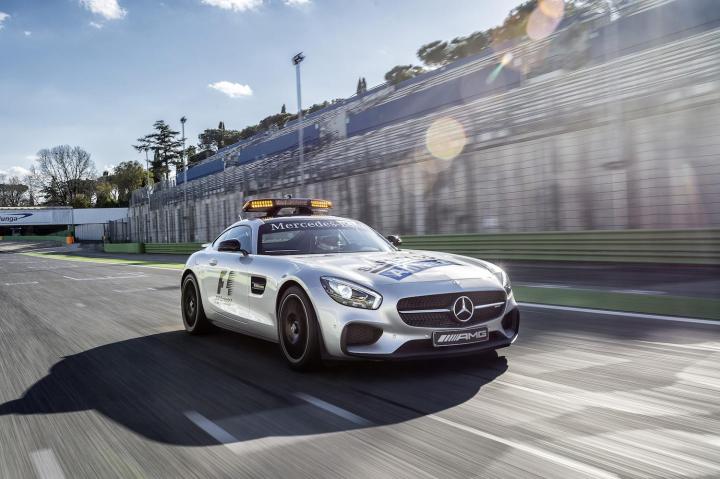
Packing the only car with a V8 to hit the track, the AMG GT S has a 4.0-liter twin turbocharged powerplant that produces 510 horsepower, giving it the power to propel to 62 mph in 3.8 seconds from a standstill. It’s also fitted with a modified performance exhaust to blast out its deep V8 baritone bel canto, distinguishing it from the V6’s packed in each race car.

The car has to meet strict requirements set by the FIA, just as any other vehicle on the track. Guiding the grid around the circuit, particularly in response to a hazard, isn,t easy. It has to be able to so at high speeds so that the cars that follow don’t have tire temperature dropping while engine temp rises.

It’s pretty much configured identically to the road going version in this regard, only kitted with a commanding orange light bar and a special safety car livery. The inside sports a video camera, for the broadcast feed, and a set of iPads for the co-driver. These display a live feed of the race while another has information regarding car locations on the track. The AMG GT is also loaded with a host of FIA-specific pack of radio communication equipment, telemetry sensors and more.
We’ll get to see the AMG GT in action in a few short days when it premiers at the Australian Gran Prix Melbourne on March 15th. Hopefully, we’ll only see it during the parade lap.


